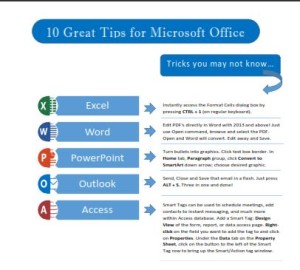Have you been frustrated when pasting text that is more than one paragraph (even if just two lines) from Word to Excel when it pastes into more than one cell? Wondered how to paste multiple lines into a single cell in Excel?

It doesn’t matter if you use the keyboard shortcut or the Paste icon(s), your text will split into additional cells each time the Enter key was pressed in the original program. Also, the default formatting will be from Word (the source program).
Paste Multi Lines into One Cell
If I paste two or more lines that are actually multiple paragraphs into Excel in cell C4, the second paragraph will end up on C5, the third in C6 and so forth because the Enter key was used as explained above.

Force All Text into One Cell
Fortunately, there’s an app for that, so to speak. Here’s the magic fix:
- Copy your text in Word to the Clipboard.
- In Excel, double click in C4 or desired cell (activates Edit mode).
- Paste using your favorite method (mine is CTRL V)
All your text (regardless of the number of paragraphs) is now in that single cell (and row)!
Note that your pasted information is automatically in the Destination format to match the rest of your spreadsheet and that it will word wrap to the width of that column.
Options
Other ways of activating Edit Mode are to be in the desired cell and click in the Formula Bar or press the F2 function key in the cell for the same result.
Controlling Line Breaks
If you would like the line break(s) to be different in your single cell contents:
- Click where you want to end that line.
- Press Alt+Enter to move everything after that down to the next line (same row).*
- Excel automatically adjusts the row height.
*Adjust the column width if needed before using the command. If you want Excel to take care of the line breaks, use the Word Wrap command on the Ribbon in the Home tab | Alignment group. It toggles on and off with every click.

Alert: Be careful how much text you try to paste into a single cell as Excel has a character limit for cells. A cell can only contain a maximum of 32,767 characters. Anything over that will be cut off.
Be sure to check out my blog for more tips that will get your work done faster in Excel: https://gaylelarson.com/5-amazing-must-have-excel-tips/
Have you had issues with pasting information from other programs and getting unexpected results in Excel? Let me know in the Comments below.













 , click Settings, and then click About.
, click Settings, and then click About.





















 Click to download great tips to speed up your Office projects.
Click to download great tips to speed up your Office projects.